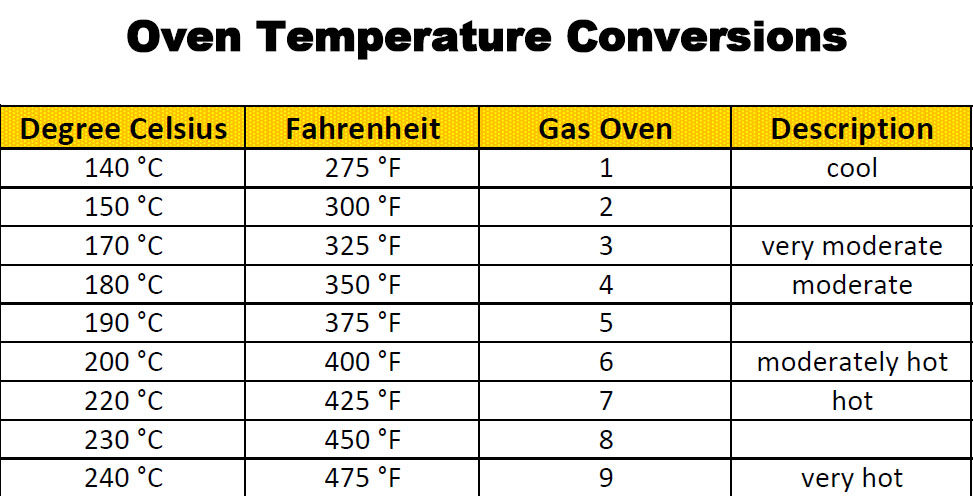Mastering Cooking Time and Temperature Adjustments

Have you ever found a mouthwatering recipe, only to realize your oven doesn't match the specified temperature, or you need to double the serving size? The frustration of a burnt dish or a gooey center is a common kitchen conundrum. Understanding the art of cooking time and temperature conversion is the secret to unlocking culinary success and consistently achieving delicious results.
Cooking is a delicate dance between heat and time. Every ingredient reacts uniquely to temperature variations, and altering cooking durations impacts the final outcome. Mastering the interplay between these two elements elevates your cooking from guesswork to predictable precision. It’s about understanding how adjusting oven settings or scaling recipes affects the cooking process, empowering you to adapt and create culinary magic.
Historically, cooking relied heavily on intuition and experience passed down through generations. Before standardized ovens and precise thermometers, cooks relied on visual cues and touch to gauge doneness. While these traditional methods still hold value, the modern kitchen benefits from a more scientific approach. The introduction of temperature charts and conversion formulas has refined our ability to manage heat and time, resulting in more consistent cooking results.
The importance of grasping cooking temperature and time conversions cannot be overstated. It allows for flexibility and adaptability in the kitchen. You can confidently tackle recipes designed for different oven types, adjust for varying ingredient quantities, and even experiment with different cooking methods. This knowledge transforms you from a recipe follower into a culinary creator.
One of the primary challenges in cooking time and temperature adjustments is the lack of a universal conversion formula. Different foods react differently to temperature changes, and factors such as pan material and oven efficiency also play a role. This complexity highlights the need for understanding the principles behind heat transfer and how they influence cooking times.
For example, converting a recipe from a conventional oven to a convection oven often requires reducing the temperature by 25°F (approximately 14°C) and shortening the cooking time. Similarly, doubling a recipe doesn't necessarily mean doubling the cooking time. The increased volume of ingredients requires a more gradual heat penetration, often necessitating a longer, albeit not doubled, cooking duration.
Adapting cooking times to different temperatures often involves a proportional approach. For instance, if a recipe calls for 30 minutes at 350°F and you're cooking at 375°F, you might reduce the cooking time by approximately 10-15%. However, relying solely on calculations isn’t always sufficient. Regular monitoring and using a thermometer to check the internal temperature of the food are crucial for guaranteeing optimal results.
Benefits of mastering cooking time and temperature conversions include: 1) Adaptability to different kitchen equipment; 2) Flexibility in recipe scaling; 3) Improved consistency and quality of dishes.
Beginners can follow a step-by-step guide: 1) Understand the principles of heat transfer. 2) Consult reliable temperature conversion charts. 3) Use a food thermometer to verify doneness. 4) Practice adjusting recipes and note the outcomes.
Advantages and Disadvantages of Temperature/Time Conversion
| Advantages | Disadvantages |
|---|---|
| Recipe adaptability | Potential for errors |
| Flexibility with equipment | Requires understanding of heat transfer |
Five Best Practices: 1) Use a reliable oven thermometer; 2) Invest in a good food thermometer; 3) Consult reputable conversion charts; 4) Start with small adjustments and observe results; 5) Take notes on your adjustments for future reference.
Examples: Roasting a chicken, baking a cake, cooking a casserole, grilling steak, and simmering a stew all require careful consideration of cooking time and temperature.
Challenges and Solutions: Inconsistent oven temperatures – calibrate your oven; Difficulty scaling recipes – understand the principles of heat penetration; Overcooking/Undercooking – use a food thermometer; Adapting to different pan sizes – consider heat conductivity; Converting between different units – use a reliable conversion tool.
FAQs: What is the difference between conventional and convection ovens? How do I adjust cooking time for a larger pan? What is the best way to convert Celsius to Fahrenheit? How do I know when my food is cooked through? Why is my food cooking unevenly? What are the best temperature conversion charts? How can I prevent overcooking? How do I adjust cooking time when doubling a recipe?
Tips: Always preheat your oven. Use an oven thermometer to ensure accurate temperature. Don’t overcrowd the oven. Let food rest after cooking.
In conclusion, mastering cooking time and temperature conversions empowers you to confidently navigate the complexities of the culinary world. By understanding the principles of heat transfer and employing best practices like using thermometers and consulting reliable resources, you transform from a hesitant cook into a culinary artist. Embracing this skill unlocks the potential to adapt recipes, scale dishes to feed any crowd, and achieve consistently delicious results. The journey from following instructions to creating culinary masterpieces begins with understanding the delicate dance of heat and time. So, grab your apron, embrace the challenge, and elevate your cooking to new heights. Start experimenting today, and discover the joy of perfectly cooked dishes every time.
Navigating healthcare in port st lucie
Verifying counselor credentials in malaysia a comprehensive guide
Unveiling dark elf names in elder scrolls arena history













